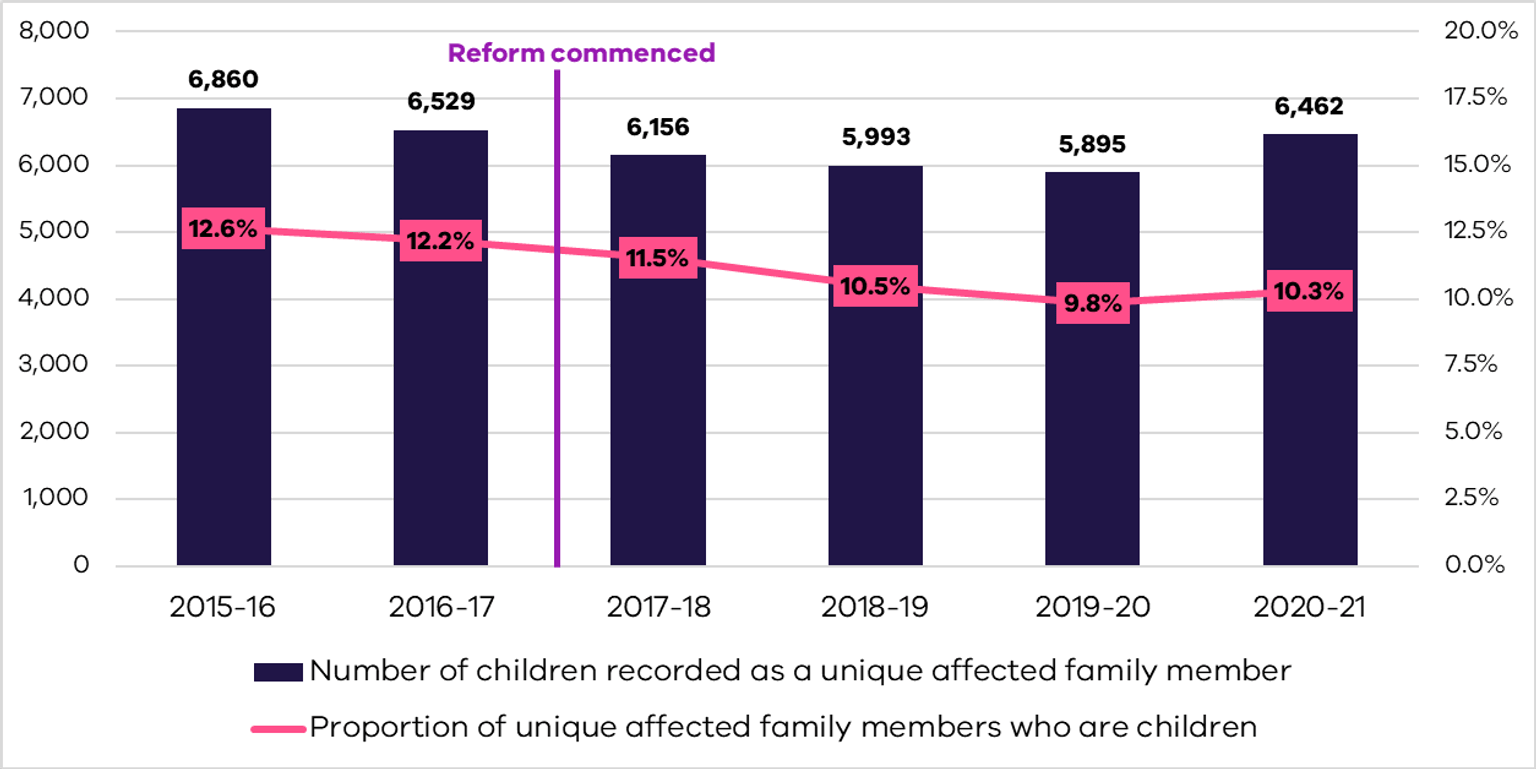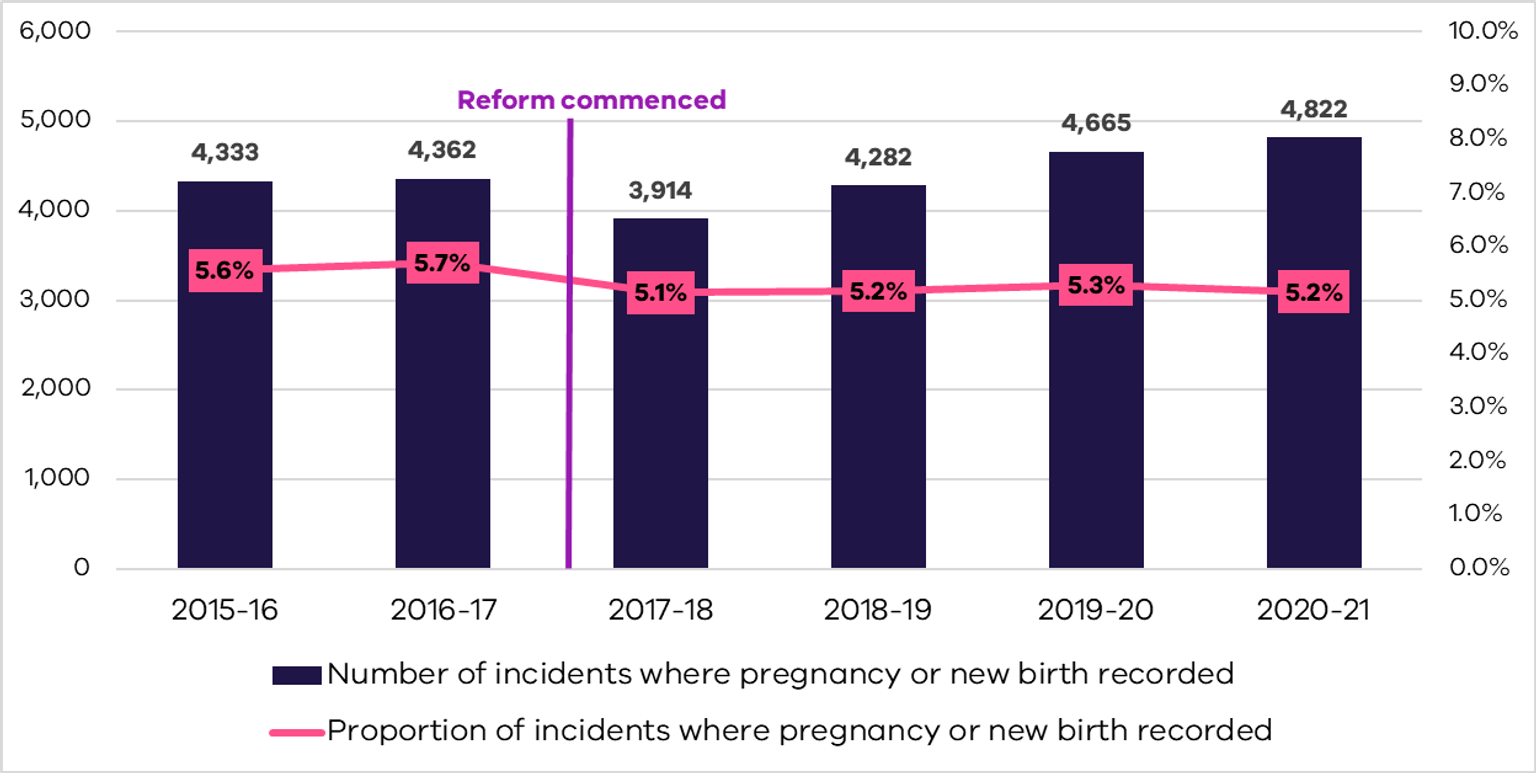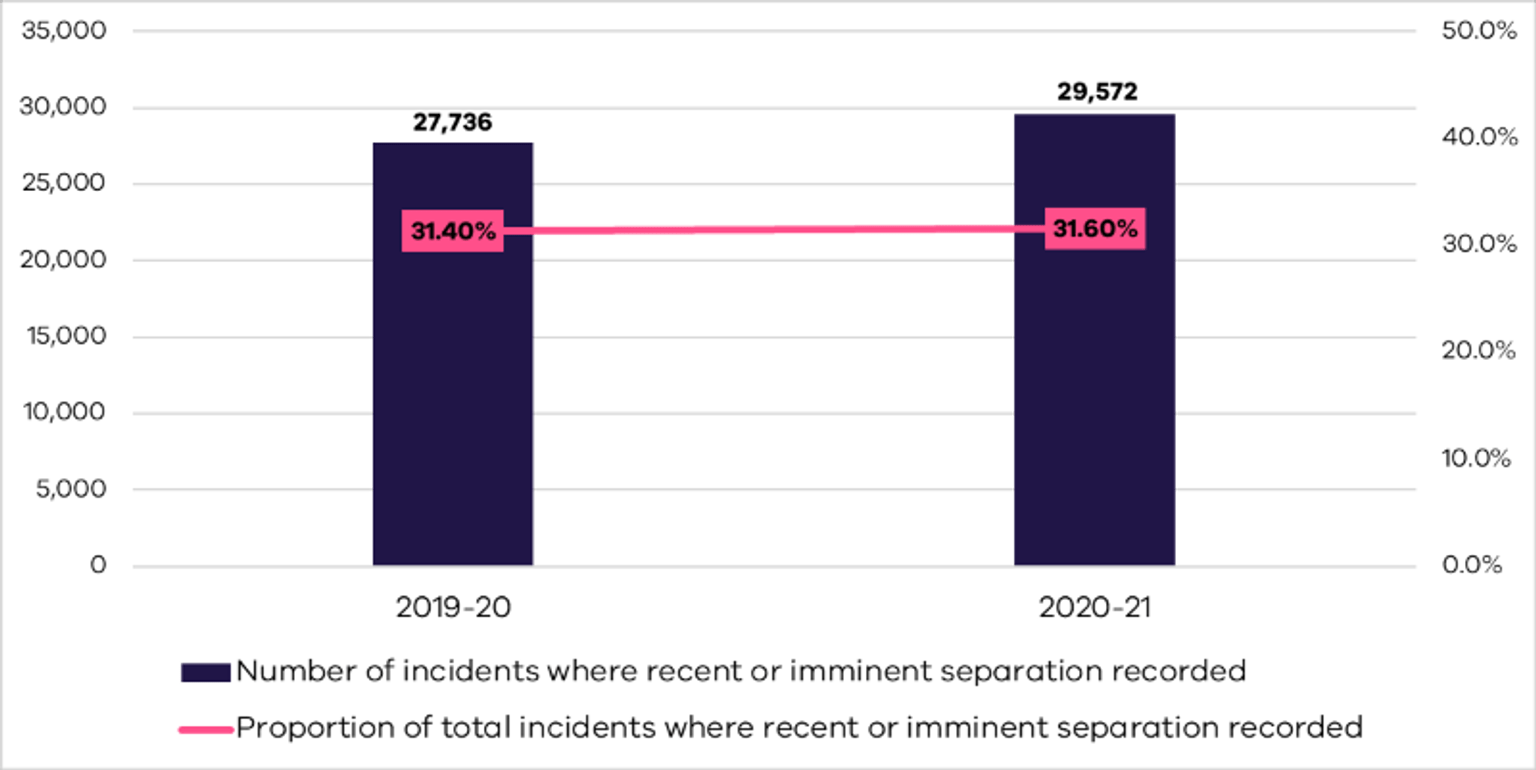Indicator: Reduction in children and young people who experience or witness family violence
The safety of children is paramount to family violence reform. Children are the most vulnerable members of any family.
Victoria’s family violence reforms recognise children as victim survivors in their own right. Any exposure they may have to family violence, even if it is not directed at them, is considered a family violence incident.
Children who are both directly and indirectly exposed to family violence can be affected by it. It can affect their physical and mental wellbeing, development and schooling. Family violence is the leading cause of children’s homelessness in Australia.1
Measure: Number/proportion of unique affected family members who are children
The number of unique affected family members2 who are children decreased between 2015–16 and 2019–20, before increasing in 2020–21. This reflects the impact of public health restrictions with the closure of social gatherings and outdoor activities. Families were restricted from leaving their homes, and children were not physically attending school. These restrictions may have increased stressors on families.
The increase in children recorded as affected family members during the COVID-19 pandemic may also have been impacted by proactive policing initiatives. These include Operation Ribbon, which monitors the behaviour of high-risk family violence offenders. Operation Ribbon may have contributed to increases in the number of recorded incidents,3 including those involving children.
In 2020–21, children represented 10.3 per cent of unique family members recorded by Victoria Police. This compares with 12.6 per cent in 2015–16. There was a slight yet consistent downward trend in the number and proportion of children affected by family violence until the slight increase in 2020–21. We will continue to monitor these trends.
Indicator: Reduction in family violence among women who are pregnant or have a newborn
Family violence during pregnancy is a significant indicator of future harm to the woman and child victim. Family violence often commences or intensifies during pregnancy. It is associated with increased rates of miscarriage, low birth weight, premature birth, foetal injury and foetal death.
Pregnancy and early parenthood are opportune times for early intervention, as women are more likely to have contact with health and other professionals.
Measure: Number/proportion of family violence incidents where ‘pregnancy or new birth’ is recorded
In 2020–21, there were 4,822 family violence incidents where pregnancy or new birth was recorded as a risk factor, reflecting 5.2 per cent of total 2020-21 family violence incidents. This compares to 2015-16 when 4,333 or 5.6 per cent of total family violence incidents recorded pregnancy or new birth
Time series data shows the proportion of incidents where pregnancy or new birth is recorded remained stable over the past six financial-years (between 5.1 per cent and 5.7 per cent).
Victoria Police reported a common factor in some incidents during COVID-19 restrictions was new or expecting parents were under greater pressure and/or stress, particularly those living in smaller residences, with these stress points compounded by other impacts of the restrictions such as working from home, loss of employment and mental health.
Indicator: Reduction in level of risk for victim survivors immediately post-separation
High-risk periods for people experiencing family violence include when a victim survivor starts planning to leave, immediately prior to taking action, and during the initial stages of, or immediately after, separation.
It is common for perpetrators to continue, and often escalate, their violence after separation. This may be as an attempt to gain or reassert control over a victim survivor, or as punishment for leaving the relationship.
Measure: Number/proportion of family violence incidents where ‘recent or imminent separation’ is recorded
If a family violence incident involves current or former partners, police will record whether the couple recently separated.
In 2020–21, recent separation was recorded in almost one-third (31.6 per cent) of family violence incident reports. The proportion of incidents where recent or imminent separation was recorded has remained stable since 2019–20 (31.4 per cent).
In 2019–20, Victoria Police introduced statewide changes to family violence recording practices through a new Risk Assessment and Risk Management report (L17). The new assessment report was accompanied by training, resulting in an overall uplift in frontline police knowledge. It is structured with conversational rather than tick-box questions.
These changes to recording practices mean that it is not practical to compare data prior to 2019. This is because there is no way to accurately measure population-level change over time.
Notes
1 Campo M 2015, Children’s exposure to domestic and family violence: Key issues and responses, CFCA paper no. 36, Australian Institute of Family Studies, p. 5, https://aifs.gov.au/cfca/publications/childrens-exposure-domestic-and-f…
2 A unique affected family member is defined as a person who has had one or more family violence incidents recorded in the LEAP database within the relevant reference period. A unique affected family member may be recorded in more than one incident during the reference period. However, they will have a count of 1 in the data presented concerning unique affected family members.
3 Rmandic S, Walker S, Bright S and Millsteed M 2020, ‘Police-recorded crime trends in Victoria during the COVID-19 pandemic’, in brief, no. 10, September 2020, Crime Statistics Agency, https://apo.org.au/sites/default/files/resource-files/2020-09/apo-nid30…
Updated


